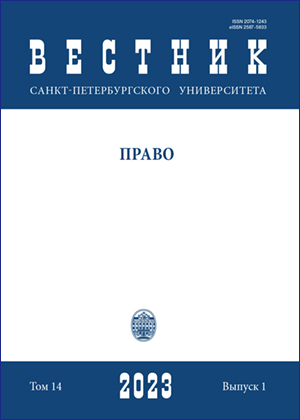The impact of dysfunctional families on the formation of personality of juvenile offenders
DOI:
https://doi.org/10.21638/spbu14.2023.117Abstract
Juvenile delinquency is one of the most difficult problems of modern society. These persons, being socially active, perceive both positive and negative features of not only peers, but also older persons. Cases when from an early age a person is in a dysfunctional family environment, because the socio-negative factors affecting him are magnified. Every crime committed by a person under the age of 18 has many causes from a criminological point of view. However, a key role is given to the family, since the negative impact on the character and behavior is carried out from the earliest childhood. Among the negative factors that directly affect the commission of a crime by a minor, we can primarily include the general family atmosphere, if it has a destructive effect on the psyche of the child. This is manifested in the illegal behavior of adults, lack of spiritual family values, unhealthy psychological climate in the family. Family problems create a number of conditions that contribute to the formation of the personality of the juvenile offender. These include: living of a minor in unsanitary conditions; lack of sufficient living space for education and life; insufficient family income, which negatively affects the place of a minor in the society of peers; examples of negative behavior of adult family members (offenses, alcoholism, drug addiction); incorrect relationship between parents and child; the use of violence against minors as an educational measure. Therefore, timely and accurate diagnosis of micro-social causes that form the personality of a juvenile offender and the development of comprehensive preventive measures are required.
Keywords:
criminology, crime, juvenile, accused, criminal, prevention, family
Downloads
References
Downloads
Published
How to Cite
Issue
Section
License
Articles of "Vestnik of Saint Petersburg University. Law" are open access distributed under the terms of the License Agreement with Saint Petersburg State University, which permits to the authors unrestricted distribution and self-archiving free of charge.






